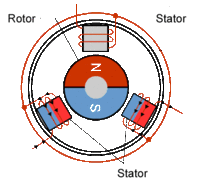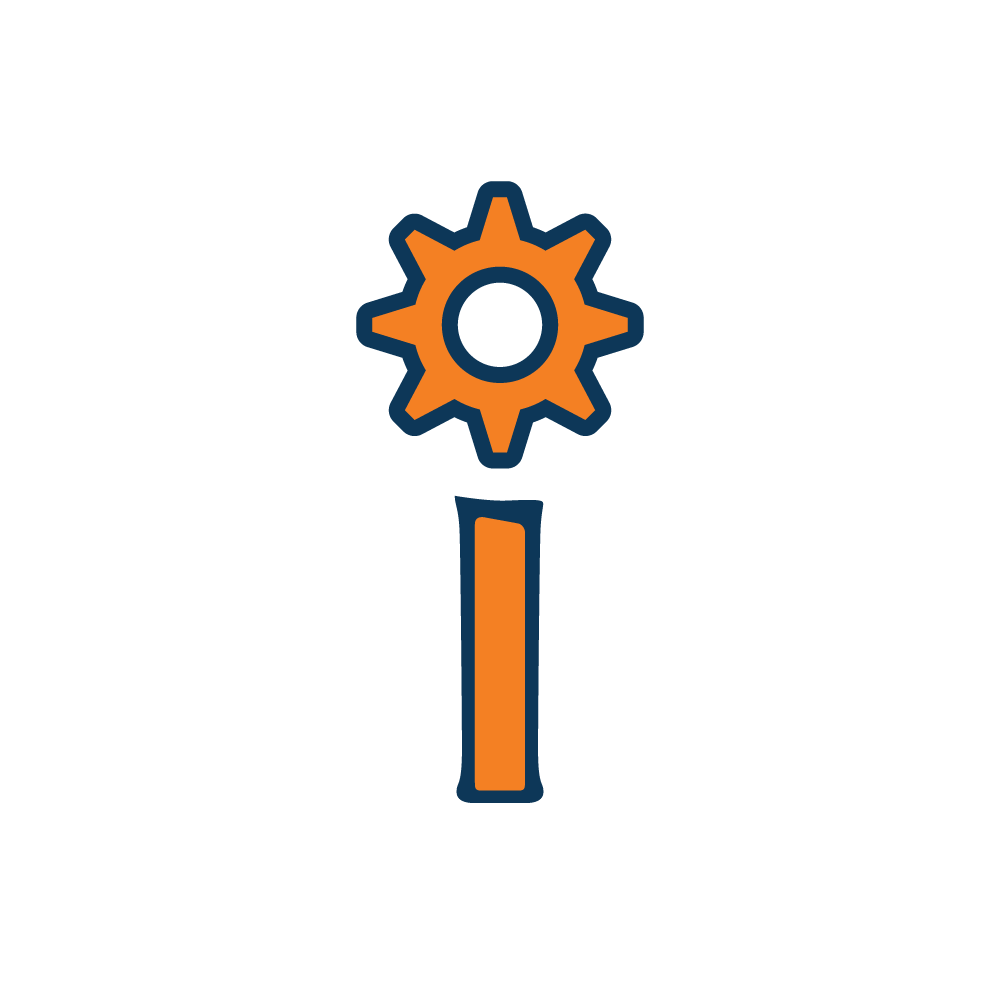30lb Combat: Motors
Brushless Motors
Overview

Brushless motors are often the motor of choice for 30lb robots. Compared to brushed motors, they have higher efficiency, higher output power, and high reliability. As a downside, they require more complex electronics to control.
Theory
Brushed motors use a mechanical sliding contact with the "brushes" contained within the motor to properly rotate the electromagnetic field within the motor to keep it rotating. Brushless motors must "commutate" (switch current through the coils to rotate the field) purely electronically.
Sensorless
Sensorless control of a brushless motor involves estimating the position of the motor and controlling the commutation appropriately without the use of an external sensor (like an encoder of hall effect sensor). This is often done by measuring induced back EMF (BEMF) from the motor as the rotor rotates. The downside to this method is that low speed control is not as good and the motor cannot produce full torque at low speeds compared to sensored control methods. This is because the BEMF signal is very low at lower speeds, thus it is difficult to get a reliable position estimate of the rotor to accurately control the motor.
Sensors
Sensored control solves the issues of sensorless control by adding an encoder or hall effect sensor to the motor in order to measure the rotor position to properly commutate the motor. Because the controller knows the exact rotor position at all times, the controller can control the motor very well resulting in improved torque and efficiency, especially during low speed and spin up. Due to needing additional sensors, it can sometimes come at a small size penalty, or may introduce another point of failure.
Motor Parameters
KV
KV is the ratio between the free speed of the motor and the peak voltage applied to the motor. Therefore, by multiplying the KV with the battery voltage, the maximum RPM of the motor can be determined. Higher KV motors have a higher top speed, but compared to an identical motor with a lower KV wind, it requires more current to produce the same torque.
Outrunners
Brands
- BadAss
- High power density and high quality outrunners.
- Intended for aircraft
- As a small note, their motors have a thin gap between the magnets and the stator, meaning that they generate high power but may be unsuitable for hub-motor designs where a larger cap can be desireable to prevent the magnets from crashing into the stator on an impact.
- Large selection of sizes + KVs of sensorless motors
- Cobra
- Lower power density but cheap and highly reliable.
- Flashhobby
- Generally a cheaper brand, which is availible on Amazon. If you are not concerned greatly with power density or quality this can be a good option.
- Flipsky
- Good source for larger E-Skate motors
- Maytech
- Has a variety of motors for different applications
- Good source for super low KV motors for low gear ratio drives or for sensored motors
- Good source for weapon motor sized outrunners
Inrunners
Brands
- Castle
- Popular choice for inrunner motors,
- Sensored motors pair well with Castle ecs and deliver incredible startup torque
- Shafts are non-customizable and come with a D-shaft by default, making them ill suited for press fits
- TPPower
- An iRobotics favorite, high power inrunner motors, lots of sizes and KV options to fit your needs.
- Can also order custom configured motors if you need a specific shaft/kv/etc.
Brushed
Generally brushed motors are not used commonly anymore for competitive 30lb robots. They are far outclassed by brushless motors in terms of power output. The major advantage to brushed motors is that they are dead simple, and can rotate off of a simple DC voltage. Common brushed motors that were used at the 30lb scale before the brushless revolution were 775 sized motors or other motors scavenged from drills.
